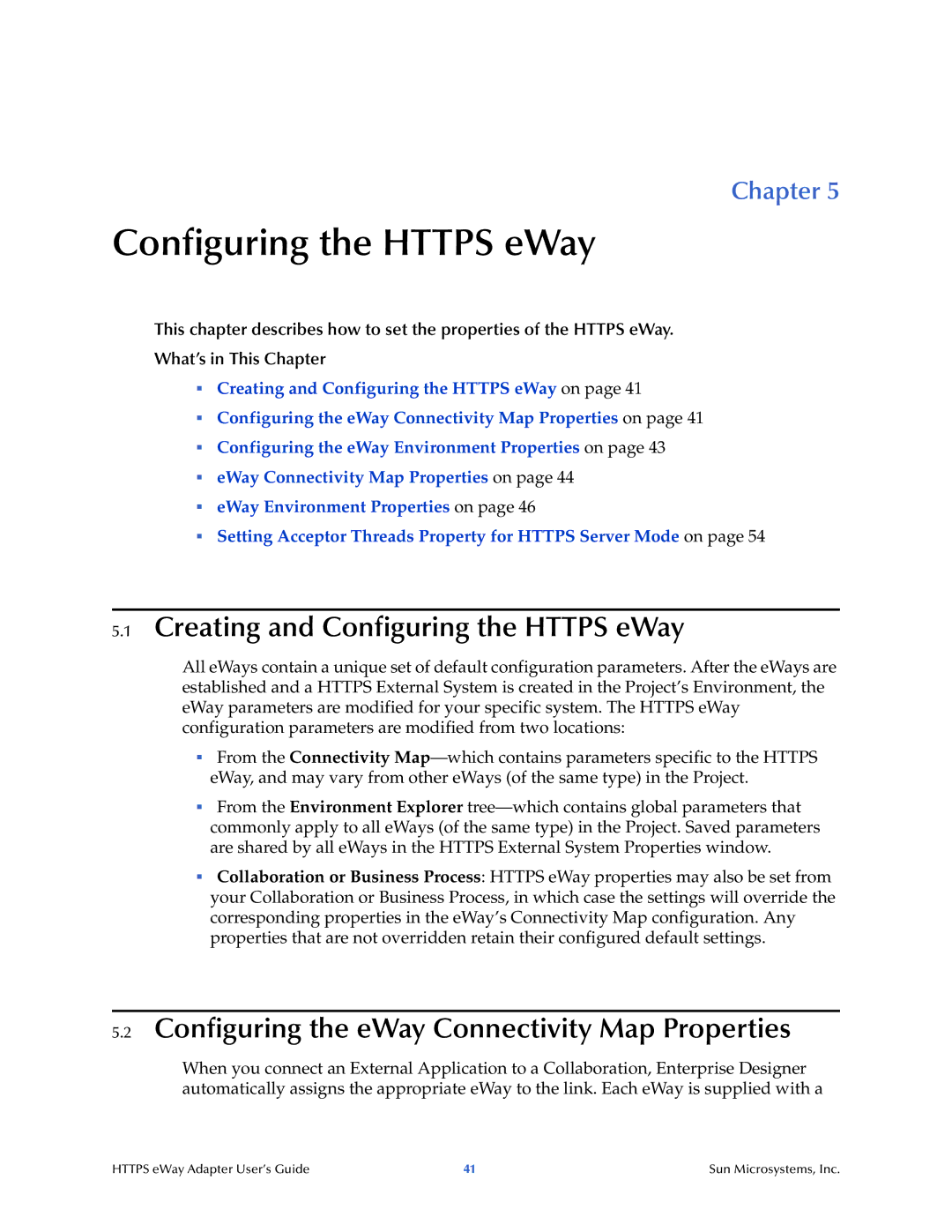
Chapter 5
Configuring the HTTPS eWay
This chapter describes how to set the properties of the HTTPS eWay.
What’s in This Chapter
Creating and Configuring the HTTPS eWay on page 41
Configuring the eWay Connectivity Map Properties on page 41
Configuring the eWay Environment Properties on page 43
eWay Connectivity Map Properties on page 44
eWay Environment Properties on page 46
Setting Acceptor Threads Property for HTTPS Server Mode on page 54
5.1Creating and Configuring the HTTPS eWay
All eWays contain a unique set of default configuration parameters. After the eWays are established and a HTTPS External System is created in the Project’s Environment, the eWay parameters are modified for your specific system. The HTTPS eWay configuration parameters are modified from two locations:
From the Connectivity
From the Environment Explorer
Collaboration or Business Process: HTTPS eWay properties may also be set from your Collaboration or Business Process, in which case the settings will override the corresponding properties in the eWay’s Connectivity Map configuration. Any properties that are not overridden retain their configured default settings.
5.2Configuring the eWay Connectivity Map Properties
When you connect an External Application to a Collaboration, Enterprise Designer automatically assigns the appropriate eWay to the link. Each eWay is supplied with a
HTTPS eWay Adapter User’s Guide | 41 | Sun Microsystems, Inc. |
